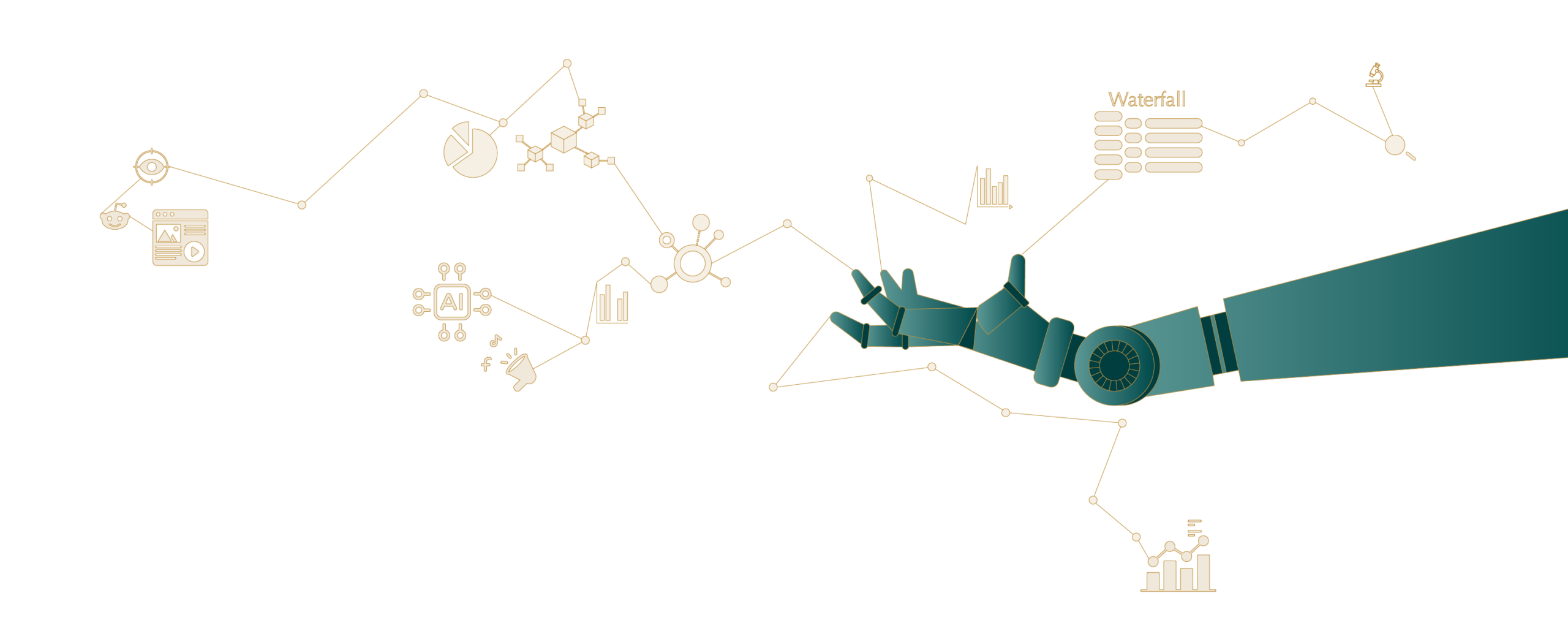
Performance marketing – how to build incremental gains week on week through Ai and Tech
In today’s fast-evolving marketing landscape, staying ahead means embracing both cutting-edge technologies and data-driven strategies. Performance marketing, with its focus on measurable results, is rapidly being shaped by Ai and new privacy regulations. In this blog, we’ll dive into the latest trends, how to optimise your marketing funnel, and the key steps to driving incremental gains week by week.
Ai isn’t just a buzzword in the marketing world—it’s a powerful tool transforming content creation, audience targeting, and data analysis. By 2023, the global AI market was valued at £106.4 billion and is projected to grow to £548.6 billion by 2027. For marketers, this means that AI is no longer optional – it’s a necessity to stay competitive.
Ai tools like ChatGPT and Jasper can now generate high-quality content in seconds. By incorporating your brand’s guidelines into Ai prompts, marketers can create a consistent voice while automating large-scale content generation. However, it’s crucial to balance efficiency with the human touch—audiences crave authentic and relatable content. According to HubSpot, 61% of marketers are already using Ai or machine learning in their strategies, with 40% of them saying that it saves them significant time in content creation.
With new privacy laws and anti-tracking regulations, attribution has become increasingly difficult. Apple’s iOS updates, which include enhanced privacy features like App Tracking Transparency (ATT), have had a significant impact. The shift from third-party cookies means businesses must focus on first-party data and invest in attribution models that don’t rely on cookies. After Apple’s ATT update, 62% of users opted out of tracking across apps, leading to reduced visibility for advertisers relying on third-party data.
Moreover, 33% of internet users now use ad blockers, further disrupting tracking efforts. The traditional funnel where brands could track users from ad clicks to conversion has fundamentally changed, requiring marketers to get creative.
What’s Next? The key to future attribution lies in owning and leveraging your own data. By tracking user behaviour on your website, app, and through email interactions, you can still create accurate targeting models. This shift is a major trend, with 79% of businesses stating that they are now focusing on first-party data strategies to maintain targeting accuracy.
Another significant trend impacting attribution is the shift towards zero-click searches. Platforms like Google, Facebook, and Instagram increasingly prioritise keeping users within their ecosystem, rewarding content that does not drive users away. This means your content needs to be digestible and engaging directly on the platform—whether it’s LinkedIn posts, Instagram Stories, or Pinterest Pins. According to a recent study, 65% of searches on Google now result in zero clicks, with users consuming the information directly on the search engine results page.
The top of the funnel is where the journey begins for your potential customers. In today’s crowded digital landscape, you need to engage users across a range of platforms before they even consider searching for your product or service.
With users spending more time on social networks, podcasts, and productivity tools, marketers must ensure their content is visible on these platforms. AI tools can help by identifying where your audience hangs out and distributing content across multiple channels. Tools like Sprout Social and Buffer can automate distribution, allowing your content to be omnipresent without additional time investment.
On the paid side, new Ai-powered tools are taking audience targeting to the next level. Meta’s Advantage+ and LinkedIn’s Predictive Audience feature offer brands the ability to leverage Ai to automatically generate custom audiences based on previous campaign data. However, caution is needed. Test and learn with these platforms’ AI models, make sure that the data and results you receive are of quality and similar to what is being reported on the platform. A study by eMarketer shows that 88% of advertisers using Ai-driven tools like predictive audience targeting have seen improvements in ad efficiency, but only 47% trust the Ai models completely, citing concerns over data transparency.
After engaging users at the start of the funnel, it’s essential to track how they move through the middle and convert at the end. This is where incremental gains—small, consistent improvements—can be achieved by closely monitoring performance and adjusting based on data.
Optimising your landing pages is key to gathering the insights you need. Tools like Google Analytics 4 and Hotjar help you track user behaviour, measure how long they spend on a page, and identify drop-off points. The goal is to constantly refine your landing pages for better performance, ensuring you’re improving your return on ad spend (ROAS).
End of the Funnel: Attribution becomes crucial at this stage. By focusing on platforms where your audience consumes content (social media, news sites, etc.), you can prompt more organic searches for your brand. Rely on first-party data and optimise your website’s conversion paths to create more predictable end-of-funnel success. According to MarketingProfs, brands that adopt an incremental gains approach—making frequent, small adjustments to their campaigns—see a 30% increase in ROI over those that only optimise sporadically.
Overall, as performance marketing evolves, embracing Ai, adapting to new attribution models, and committing to data-driven incremental gains will be essential for marketers. By staying present in your audience’s digital world, focusing on first-party data, and testing new Ai tools, you can continue to thrive in a privacy-first, Ai-powered world.
Start harnessing the power of Ai and data-driven strategies today!

